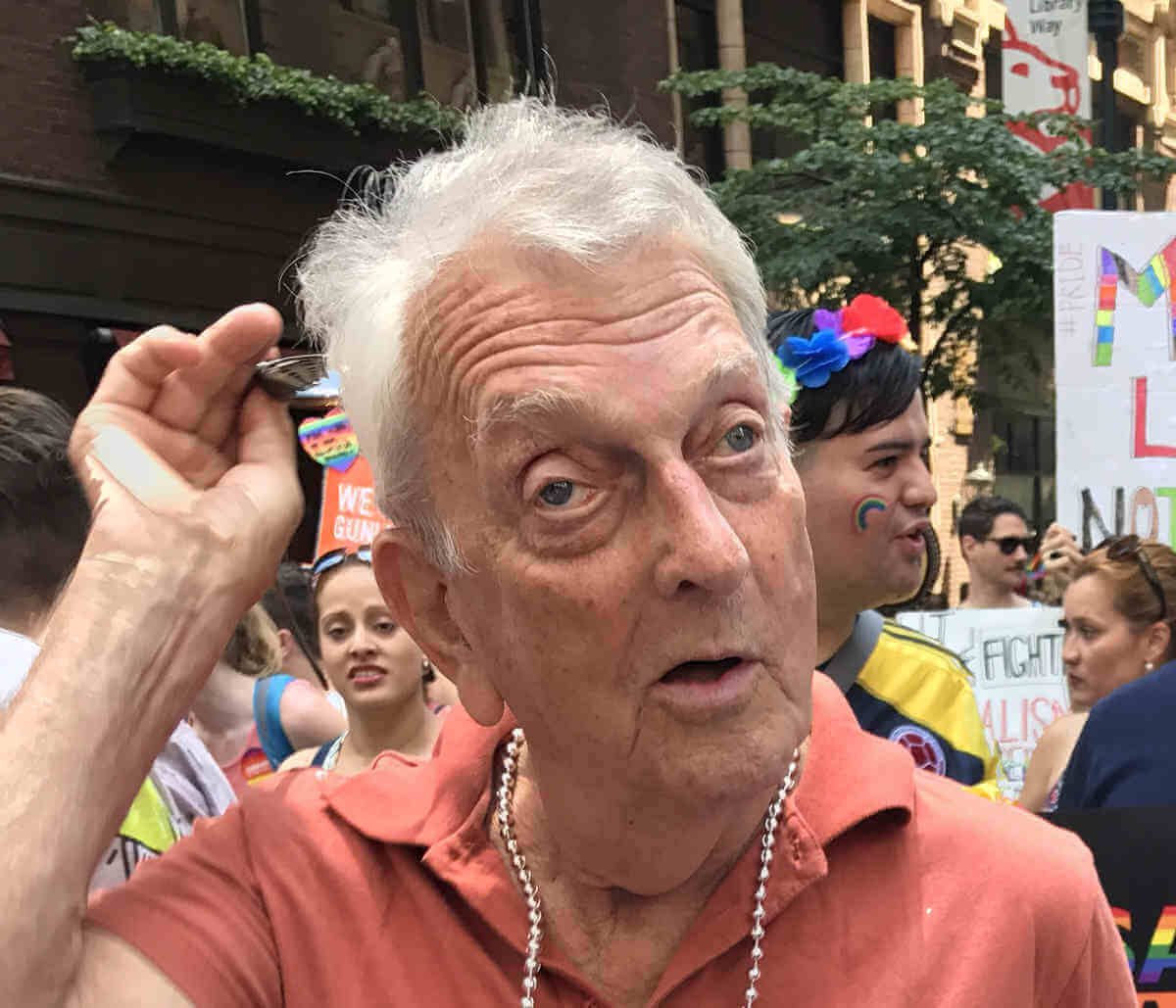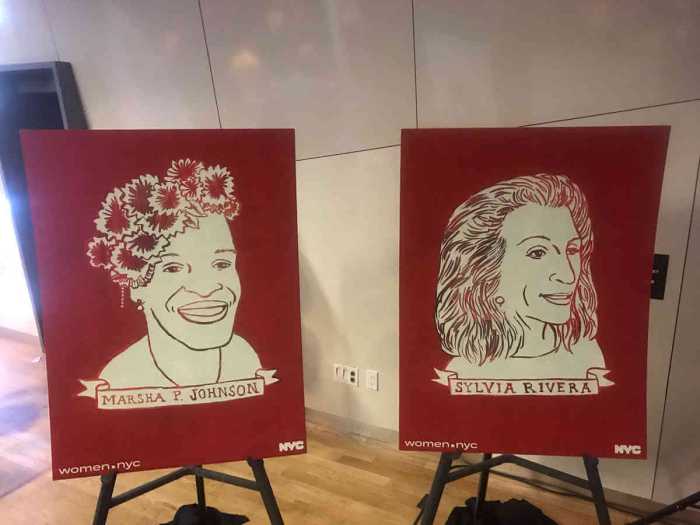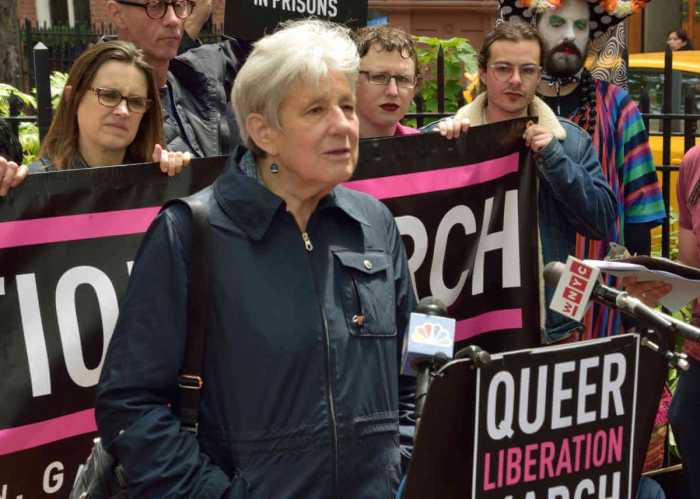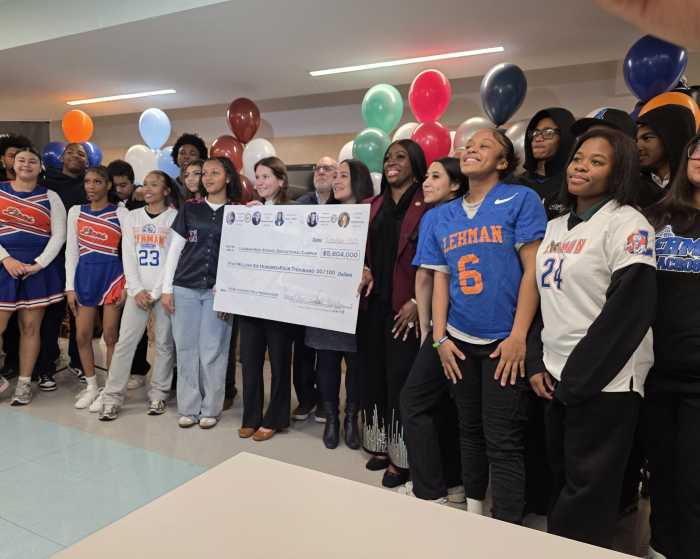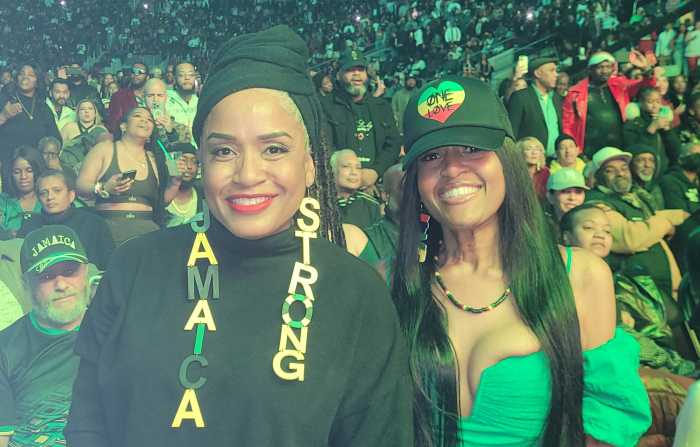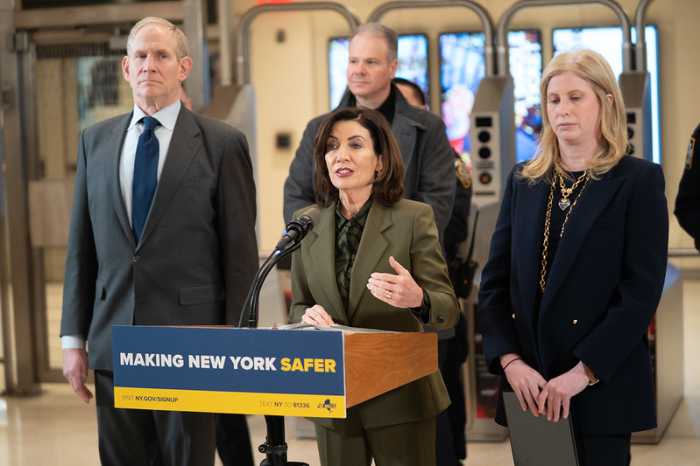In early 1970, Dick Leitsch was feeling the pressure of an emerging radical faction that was replacing the Mattachine Society of New York (MSNY) and other political groups that held significant roles in the LGBTQ movement since the ‘50s.
Leitsch, who had been an MSNY officer since 1965 and was a force in LGBTQ politics nationally as well as in New York City, was also troubled by the police department’s continued “gross harassment of the Continental Baths,” an Upper West Side bathhouse, and its “outrageous violations of the rights of customers,” he wrote in a January 14, 1970 letter to the department.
“Mr. Leitsch further stated that he wants to cooperate with the police, however, it would be impossible for him to direct the members of the Mattachine Society if they were continually harassed by the Department,” Frank Bianco, a detective in the police department’s political surveillance unit, wrote in a March 12, 1970 report.
A shorter February 3 report about Leitsch’s letter indicates that Bianco met with him between January 14 and February 3.
There is nothing in the reports suggesting that Leitsch knew that Bianco was spying on Mattachine and the Gay Liberation Front (GLF) when they met.
The letter is not in the files of the NYPD’s political surveillance unit that are now held by the city’s Department of Records and Information Services at the Municipal Archives. Gay City News could not find the letter in a searchable database of LGBTQ community records administered by Gale, a unit of Cengage, a publicly-traded company that supplies content and tools to the education and library markets.
Bianco quotes the letter and paraphrases Leitsch in both reports.

“[T]here is a power struggle taking place at this time between the Mattachine Society and the Gay Liberation [Front],” Bianco paraphrased Leitsch saying. “He added that the Mattachine Society has attempted to get favorable legislation passed in an orderly and lawful manner, however, this process is too slow for the homosexual community.”
The situation was “potentially incendiary” and could lead to more “Christopher Street rioting,” Leitsch wrote. He issued a warning and perhaps made an offer.
“I don’t feel like I’m ‘selling out my brothers’ by tipping you off that Gay Liberation Front plans to ‘zap’ the cops during one of the Continental Bath [sic] raids,” Leitsch wrote in the letter.
Bianco reported that Leitsch said in the interview following his letter that he had been “emotionally driven” when he wrote and was not, in fact, aware that GLF planned such an action.
“He assured the writer that he would inform this Department if he knows or hears of such plans,” Bianco wrote.
For 13 years, MSNY had effectively had New York City’s LGBTQ community largely to itself save for those occasions when Frank Kameny, who founded the Mattachine Society of Washington, DC, and whom Leitsch disliked intensely, came to the city or state to speak.
MSNY did make a difference in the lives of LGBTQ people, but like any political organization, it tended to exaggerate its accomplishments and assume that temporary victories were permanent.

But following the 1969 Stonewall riots, GLF, a new militant group, had quickly altered the landscape and Leitsch needed a victory — such as an end to the harassment at the Continental Baths — that he could bring to the community.
Leitsch, who passed away in June, did not get his win and, in November 1969, GLF descended on the meeting of the Eastern Regional Conference of Homophile Organizations (ERCHO) in Philadelphia.
“The reason we went was that we believed the politics of the homophile movement were at a finish,” Jim Fouratt, a longtime LGBTQ activist, told Gay City News. “The single-issue politics of the homophile movement was rejected by the men and women in the Gay Liberation Front.”
Fouratt had trained in the radical Diggers movement and the Living Theater. His police file notes his multiple arrests during protests in the ‘60s. A “Hippie leader in the East Village area,” Fouratt was “present at a tree planting on St. Marks Place” on August 12, 1967, his file says. That planting occurred in the middle of the street. The same year, he showed “his contempt for The Establishment by eating money at the New York Stock Exchange,” according to a Daily News article in his file.
Fouratt was one of a half dozen GLF members who disrupted the ERCHO conference.
“It was more of a Yippie influence than the Diggers,” he said. “The politics of spectacle, the Marshall McLuhan capture the media.”
Their reception was decidedly mixed. In 1971, the Gay Activists Alliance in New York City, a GLF rival, sent an appeal to “All Gay Groups and Newspapers” seeking documentation of GLF disruptions of meetings and conferences. The appeal named Dan Smith, Ralph Hall, and Fouratt as notable offenders.

In response, Foster Gunnison, a longtime MSNY volunteer who also ran the Institute of Social Ethics (ISE) in Connecticut, said of Fouratt at the ERCHO meeting, “I came within a hair of pasting him at the conference.” Before he knew their names, Gunnison called Fouratt “Vinegar” and Earl Galvin, another GLF member, “Sugar” to describe their roles at the meeting.
In a November 1969 report to ISE colleagues, Gunnison wrote, “I was appalled by what I perceived to be their domination of the conference and the agenda, their proposals and philosophy such as I could determine the latter, and their degree of organization and tactics, and above all their unbelievable crudeness, rudeness, and vulgarity.”
A report on the ERCHO conference to the MSNY board says, “The movement must be open to everyone, the gay hawk as well as the gay dove, the homosexual Tory as well as the homosexual socialist. Only one thing is demanded — a fundamental loyalty to the American system of representative government. There is absolutely no place in either ERCHO or [the North American Conference of Homophile Organizations] for the out-and-out revolutionary.”
The January/ February 1970 newsletter of Philadelphia’s Homophile Action League (HAL) was moderate in its view of the conference. A lot of time was spent in “verbal tugs-of-war between the radical faction” and “the liberals,” the newsletter reported. The debates “often shaded over into some very entertaining theater,” but “were by no means a waste of time. They offered all of us who are involved in the movement the challenge of re-evaluating our thinking… and they presented us with alternative philosophies which will ultimately be useful whether they are accepted, rejected, or adopted in part.”
Despite any objections, the ERCHO meeting adopted most of the proposals put forward by the GLF contingent. It endorsed “sexual freedom without regard to orientation,” “freedom to use birth control and abortion,” “freedom to ingest the drugs of one’s choice,” freedom “from society’s attempts to define and limit human sexuality,” and “Freedom from political and social persecution of all minority groups.” Some individual groups, including Philadelphia’s HAL, would later disassociate themselves from some of these items, which was allowed under ERCHO rules.
The meeting did not, however, support a proposal to endorse the November 15 Moratorium March on Washington, an anti-Vietnam War protest, but delegates did support urging members to join the march “as homosexuals,” according to the HAL newsletter.
Most significantly, with Kameny chairing the ERCHO meeting, it voted to replace the Annual Reminder Day with marches on the last Saturday in June in individual cities across the country that would commemorate the Stonewall riots. Members were to urge this action on peers across the country.

The Annual Reminder Day demonstrations had occurred every July 4 at Independence Hall in Philadelphia since 1965. Kameny presided over the event, which had a strict dress code requiring men to wear a suit with a white shirt and tie. Women had to wear dresses. Men had to be clean-shaven with a recent haircut. The “wearing of beards will be discouraged,” the rules said. Picketers marched in single file carrying only approved signs. The purpose was to represent LGBTQ people as employable.
The new form of Annual Reminder Day would make the event “more relevant” and “reach a greater number of people and encompass the ideas and ideals of the larger struggle in which we are engaged — that of our fundamental human rights,” the resolution said. The resolution, which also said, “No dress or age regulations shall be enforced in this demonstration,” passed unanimously with only MSNY abstaining.
“I thought a lot about those early years and how harsh we were toward Frank Kameny and others,” Fouratt said. “We were not opposed to the [Independence Hall] action, but we felt that the assimilation politics that it represented were not the politics of the moment. We felt we were making a revolution and we wanted everyone to be free.”
The annual meetings of the North American Conference of Homophile Organizations in 1969 and 1970 were also disrupted and ultimately steered in a more radical direction by GLF contingents. That group never met again after 1970. ERCHO also dissolved.
In New York City, the Gay Activists Alliance (GAA) was established in December 1969 by former GLF members who could not tolerate that group’s essential anarchy. By 1972, there were GLF and GAA chapters across the country in sufficient numbers that at least 64 as well as other radical groups were represented at a Chicago meeting that drafted a set of demands they planned on presenting to the Democratic and Republican Party Conventions. They had some success at the Democratic Convention, according to Lillian Faderman’s “The Gay Revolution: The Story of the Struggle.”
MSNY was represented at the Chicago meeting, but by Jim Owles, a GAA founder. Kameny proved to be more resilient than his early New York Mattachine peers and attended the Chicago meeting as well as a second in Washington, DC. By 1971, Leitsch had been accused of misappropriating funds from MSNY and removed from the group. That same year, MSNY told GAA that it was shutting down and proposed a merger of the two groups. Whether that was done legally is unclear, but it was done in fact. Former GAA members ran the group for several years.
Leitsch and MSNY were not alone in initially missing the significance of the Stonewall riots, but they persisted in that posture longer than other groups. In his biography of Vito Russo, “Celluloid Activist: The Life and Times of Vito Russo,” Michael Schiavi wrote that Leitsch and MSNY had been “hopelessly eclipsed” by the radical groups.

In “Stonewall: The Riots That Sparked the Gay Revolution,” the definitive account of that event, David Carter notes MSNY’s “ambivalent response” to the riots and quotes Martha Shelley, a former member of GLF and Daughters of Bilitis, an early lesbian group, describing a Mattachine meeting on July 9 immediately after the riots. Shelley was part of a committee that was tasked with organizing a demonstration. Leitsch burst into the room when the group grew loud.
“He was really upset,” Shelley said in Carter’s book. “He thought we were going to have another organization. There were seven gay organizations in New York, some consisting only of two people and a newsletter. He wanted there to be one organization, with him at the head of it. So we reassured him, ‘Oh no, we’re not starting an organization. We’re just a march committee.’”

